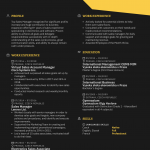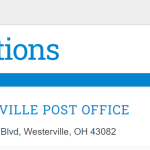Car Insurance
Car insurance is a must have for any vehicle. It provides financial protection in case of bodily injury, physical damage, and liability. You should understand what these coverage entail and what limits each policy has. Also, learn how much the different types of coverage cost. In addition, understand what your limits of liability, comprehensive, and collision coverage are.
Limits for comprehensive and collision coverage
There are limits on collision and comprehensive coverage on car insurance. The limit determines how much the insurance company will pay if you have to make a claim. Choosing a higher limit means higher premiums, so consider your risk and budget when choosing a limit.
Collision coverage will help you repair the vehicle if you’re at fault in a collision. Comprehensive insurance will pay for damages caused by other causes, such as hail or animals. You can also add additional coverages to your policy to make it more personalized. For instance, you can add roadside assistance or emergency road service.
In case you have an accident, you should have a comprehensive and collision policy that covers the damages to your car and other people’s vehicles. It is not mandatory to purchase full coverage, but it can give you peace of mind. When choosing collision and comprehensive coverage, remember to check the deductible and the maximum payouts. Your limit should never be more than 10% of the total value of your car.
Collision and comprehensive car insurance is often sold together. But some companies may offer collision-only policies for cars that are not used regularly. Both policies cover damage to your car, but don’t cover medical expenses. Comprehensive and collision policies also have different deductibles. A lower deductible is better for your budget.
It’s important to remember that you don’t have to purchase comprehensive and collision coverage for your car if it has a low cash value. This is referred to as the “10% rule.” If the value of your car is less than 10% of its cash value, you don’t need this coverage.
In general, deductible levels should be no more than $500 or $1,000 for comprehensive and $2,500 for collision. A $1,000 deductible will save you approximately $350 per year. Choosing deductible levels for collision and comprehensive coverage is an important step in purchasing full coverage. Choosing deductible levels that are too high can slow down the claims process, while choosing deductible levels that are too low can increase premiums.
Limits for uninsured motorist coverage
Limits for uninsured motorist coverage for car insurance differ depending on state requirements and the percentage of uninsured drivers on the road. You may also be able to stack your coverage to increase your liability limits. Stacking is a practice that benefits car insurance policy holders who insure multiple cars. Similarly, if you have multiple vehicles insured under a single policy, you may have to add up all the limits of uninsured motorist coverage on all vehicles.
Limits for uninsured motorist coverage are based on how much your insurance policy pays for bodily injuries and property damage. A good UMPD limit is $100,000 per accident, and you should make sure it closely matches the value of your vehicle. In many states, this type of coverage is mandatory.
Limits for uninsured motorist coverage for car insurance vary widely. In some states, underinsured motorist coverage doesn’t apply if the at-fault driver has the same liability limit as you do. Make sure to read your policy for more information. Underinsured motorist coverage also covers injuries to passengers and anyone else who is driving your vehicle with your permission.
Limits for uninsured motorist coverage for car insurance depend on many different factors, including the state in which you reside and the type of car insurance coverage you have. In some states, uninsured and underinsured motorist coverage is mandatory.
A higher limit for uninsured motorist coverage can make your car insurance premiums more affordable. In addition, uninsured motorist coverage can protect you from accidents caused by drivers who don’t have insurance or leave the scene without exchanging information. You can also choose to bundle underinsured motorist coverage with your uninsured motorist coverage to ensure that you have additional coverage in case of a collision with an uninsured motorist.
Uninsured motorist coverage is the second-most expensive type of car insurance coverage. However, it may be worth it if you’re involved in a car accident with a person with no insurance. The other driver may have an insurance policy that only pays for bodily injury or property damage.
Cost of coverage
While the cost of car insurance coverage depends on several factors, there are some things that can be done to reduce the cost. For instance, keeping a clean driving record can lower your premiums by as much as 40%. You may also qualify for a safe driver discount. Poor credit can push up your rates by up to seven1%. A poor credit score also raises red flags to insurance companies. In some states, you can drive without a credit check to save money.
Another key factor to consider is the cost of deductibles. Deductibles can be as high as $500 per year, which translates to around $1,500 per year. The cost of comprehensive coverage, or full coverage car insurance, depends on a variety of factors, including your age, gender, and car model.
New drivers can expect to pay higher rates than more experienced drivers. Car insurance companies consider your history of driving and filing insurance claims. The younger you are, the higher the risk of an accident. Those who have had a few tickets in their driving history may also pay more than those who have more experience.
Getting car insurance is not an unnecessary luxury; it’s a necessity. In an overregulated world, driving without car insurance can carry severe penalties. Moreover, many states have minimum insurance coverage amounts. While everyone’s needs are different, the following guidelines should help you determine the amount of coverage you need.
Age and credit score are two factors that affect the cost of car insurance coverage. Senior drivers in North Dakota, for example, pay $324 more than drivers with good credit. Poor credit drivers are also at a higher risk of being involved in an accident. These factors can drive your insurance costs up significantly. In addition, people with poor credit can be charged $1,042 more than their counterparts with excellent credit. For military families, the best way to avoid paying too much is to buy a policy through USAA.















